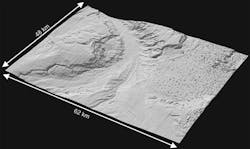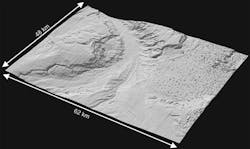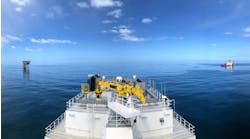D. Barker
Fugro N.V.
Despite several decades of experience in deepwater and ultra-deepwater development, some oil and gas operators risk making costly mistakes by not considering complicated seafloor conditions and geohazards early enough in the development process. In extreme cases, proceeding to pre-front-end engineering and design (pre-FEED) work without an adequate understanding of site complications can jeopardize project economics; it can also potentially delay first oil or first gas by years.
Operators can avoid unnecessary delays, reduce development risks, and preserve project value by systematically assessing site conditions and geohazards at appropriate levels of detail during the concept stage ofdeepwater developments. Given the current market - particularly for large, complicated, and extremely costly deepwater developments - preserving value and minimizing risk through efficient project execution are now more important than ever.
For optimal deepwater field development, early consideration of site conditions is a critical element of the project selection process. This approach is based on the idea that value is created by selecting the right project to pursue during the discovery, appraisal, and selection phases; it is preserved by executing the project in the right way during subsequent phases. Value that is either not created, or is destroyed in the early phases of a project, cannot be recovered later. Concept stage site assessments beginning in the exploration phase can help to create value by supporting appraisal and selection; they then help to preserve value by providing the foundation for the kind of logical program of pre-FEED and FEED site investigations.
All elements of the deepwater development process are related to each other, so that there is feedback between reservoir characterization; drilling, completion, and production strategies; and surface facilities strategies (including subsea infrastructure and export strategies). The important implication is that aspects such as export strategy and field layout - which have historically been considered to be secondary to discovery and reservoir definition - have the potential to pose difficulties that are significant enough to redefine project economics and ultimately project value. Such potential value loss can be critical in a time when corporate strategies are being recalibrated to a new reality of low oil prices into the foreseeable future.
The potential for value destruction is especially significant in fast-tracked projects with ambitious dates for first oil and gas. It may appear that impressive progress is made in terms of reservoir definition, drilling and production planning, field layout design, and even geotechnical data acquisition. However, failure to consider geohazards or unfavorable seafloor conditions could affect project schedules and economics. Poor planning can cause avoidable delays if the need to perform adequate site assessments, or more detailed investigations, is recognized at a later stage, especially if field layouts or export routes need to be changed and work repeated. Likewise, costs can increase significantly if geotechnical or high-resolution geophysical data are collected in the wrong locations to support field layouts conceived without an understanding of seafloor conditions, requiring additional data acquisition campaigns.
Unanticipated but discoverable geological conditions have been seen to cause delays when, following poor decisions at deepwater developments, export pipeline routes, infield flowlines, and other locations have had to be changed. These delays have in some cases resulted in the need for additional time-consuming and expensive data acquisition campaigns. The decision to undertake an appropriate site assessment at the concept stage can preserve value if it identifies problematic conditions in time to guide field development plans, develop an appropriate plan of investigation, evaluate alternatives and ultimately avoid expensive mistakes.
For data management, analysis and decision support - including concept stage development of extensible ground models, and quantification of seafloor conditions that have the potential to affect seafloor activities - using GIS allows more robust evaluations. Modern approaches to seafloor development favorability mapping integrate GIS technology with concepts from the multicriteria decision support literature.
Using available data to its full potential is another way to avoid costly mistakes. Despite the ready supply of data, which has already been collected and processed by the exploration department, errors can be made at the concept stage. This happens because available data - most often existing 3D seismic exploration volumes - is not used to its full potential, or even not used at all, to support key decisions that can create or destroy value.
Performing work in the proper sequence can also help to avoid costs associated with the need to repeat tasks.
About the author
D. Barker is a member of Fugro NV’s Global Communications team, based in Leidschendam, The Netherlands.
Reference
D’Souza, R., Basu, S. and Fales, R., “Selecting the right field development plan for global deepwater developments,” presented at the Deep Offshore Technology International Conference & Exhibition, Nov. 27-29, 2012, Perth, Australia, Paper 2317.




